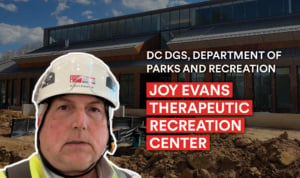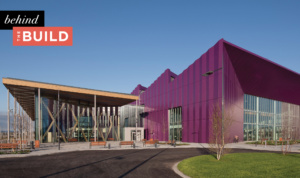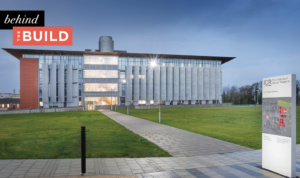MGAC Behind the Build: White Plains Hospital
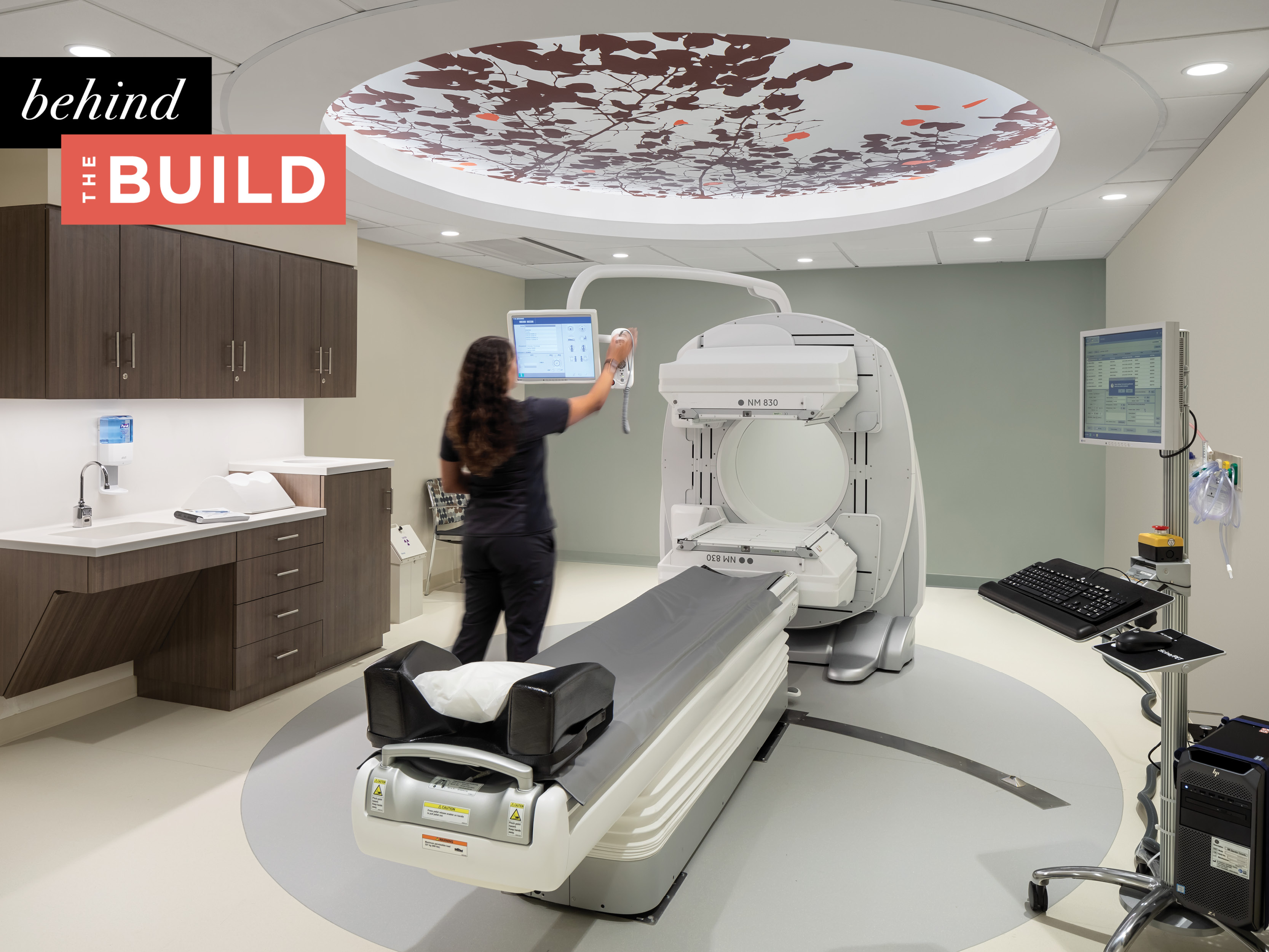
MGAC was founded on a simple promise: to take the most interesting, ambitious project ideas and make them a reality. Getting there is a matter of countless small steps, conversations, and carefully-calibrated decisions, taking place between day one and that long-awaited delivery day. These are the moments that make a project. With our Behind the Build series, we take a closer look at the roads that lead to a final product, delving into the ways our talented, passionate team makes a project possible. Today, we revisit our work with White Plains Hospital.
The story of White Plains Hospital dates back to 1893, when a group of two dozen volunteers in then-rural White Plains, New York transformed a four-room house into a village hospital. The community pitched in to keep the makeshift facility running, and, in the first year, 31 patients were treated within its walls.
As Westchester County grew around White Plains Hospital, it grew in turn to match its needs—and then some. Despite a quickly changing world, the hospital held fast to its role as a community cornerstone and is now the leading healthcare provider in the region. White Plains currently treats roughly 200,000 patients a year with a staff of 4,500 employees, and a new era of advanced care is just beginning.
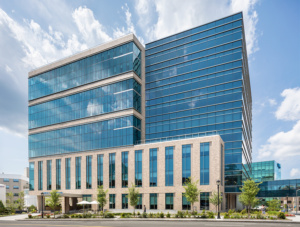
LAY OF THE LAND
In the state of New York, a high concentration of hospitals makes the healthcare sector famously competitive. This landscape served as the context for our work at White Plains Hospital, a member of the Montefiore Health System. Beginning in 2015, the ambitious Campus Transformation Project was at the time the largest series of additions and renovations to the hospital in its 127-year legacy. A natural next phase in the historic hospital’s evolution, the project is an exciting reimagining, poised to connect thousands of highly trained employees to state-of-the-art data and tools that will revolutionize the patient experience.
In 2019, MGAC was brought on to provide vision development for technology at the all-new Center for Advanced Medicine and Surgery (CAMS), a major piece in the ongoing rejuvenation project. Here, cutting-edge technology was an early promise, and essential to the new building’s purpose as the hospital’s largest dedicated outpatient facility. CAMS would be a 9 story, 250,000 SF building offering diagnostic testing, specialized clinical programs, dedicated non-oncologic infusion, the only PET/MRI in the county, and operating suites for same-day procedures. Access to these services at such a vital, community-embedded facility would make an immediate impact on the area.
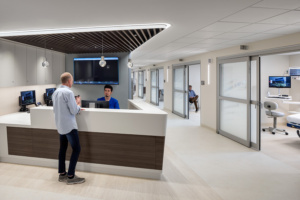
ARRIVAL ON THE SCENE
Technology is a connector in all modern buildings. In healthcare, technology is a vital enabler to nearly every aspect of the environment. When executed well, it’s a seamless integration, improving everyone’s experience. To make this possible, our teams typically engage in a project’s early planning stages—often years before ground is broken. We work closely with all stakeholders of the project team—leadership, designers, architects, contractors—as well as the end users and IT departments, to ensure every perspective and touch point is accounted for. From there, we formulate a path for systems integration. In this case, however, construction was already beginning on CAMS when the hospital called on MGAC.
Beginning at such an advanced point in the timeline created some considerable challenges. Rather than creating the technology solutions in tandem with the building’s design, our team was tasked with designing solutions to fit a design that was already approved and underway.
FINDING BALANCE ON SITE
On any project, we start by listening to all parties involved, in order to execute a plan that pleases everyone while honoring the end goal. In other words, we’re often involved in several key negotiations. At White Plains Hospital, MGAC was brought on by the planning and design division, though our work would represent the interests of the hospital’s IT department—a segment of the team that, understandably, is not necessarily versed in construction management. It was our job to serve as this team’s liaison on-site while keeping all of the many stakeholders heading in the right direction—a task that required a delicate balance and lots of coordination. MGAC’s ability to speak several different “languages”—technology, IT, project and schedule management, and design—was instrumental in bridging gaps and facilitating crucial communications where needed.
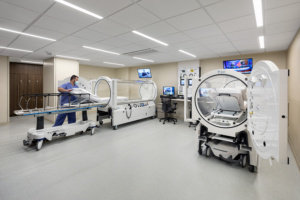
THE PATIENT JOURNEY
Despite the highly technical nature of this job, our earliest conversations had nothing to do with technology. Instead, we began with an exploration of the patient experience—a part of the project we could all relate to.
With this idea in mind, we created a map of the “patient journey,” beginning the moment an appointment is set and continuing through arrival and parking at the hospital, checking in, receiving a treatment or procedure, checking out, and completing any necessary follow-up. During that process, we made sure to note the sticking points or inconveniences we had encountered during our own healthcare experiences. Difficulty parking, boredom in waiting rooms, exhaustive paperwork, and possible anxiety brought on by medical settings were all the things we’d aim to mitigate at CAMS.
With the patient journey and supporting workflows in place, we worked to determine the technology that would be required to optimize each step in the process. This included systems, digital signage, and public wireless networks to workflow management systems and tablets for self-check-in and form completion. From there, we worked with hospital staff to ensure the technology plan would support their needs and daily experience within the building.
THE NATURE OF TECHNOLOGY
With any technology project, it’s important to remember how quickly technology can and will change. Software, equipment, and best practices are constantly evolving, so when outfitting a new building, planners must simultaneously consider patient first day and ten years ahead. Future-looking questions are key, such as, what is the longevity of the systems we put into place? How will these systems be upgraded over time? By what KPIs will systems be evaluated for replacement or expansion? Does our budget allow for lasting solutions that will remain viable for a considerable period of time? Making these predictions can be challenging, but with educated forecasting and extensive budget conversations (not to mention ample experience in the healthcare field) the team was able to deliver an environment that will continue to serve patients and attract top talent to the hospital’s workforce for years to come.
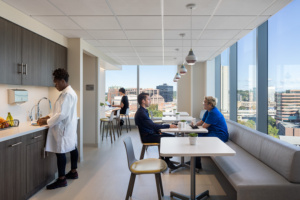
A MODERN MARVEL
While the Campus Transformation Project is still ongoing, the completed additions are truly groundbreaking. Today, several specialty programs and many of the area’s most sought-after physicians can be found at CAMS—a major win for White Plains Hospital, and an even greater boon to the nearly one million people who call Westchester County home. For MGAC, the project represented a unique accomplishment. With considerable catch-up needed on the front end, as well as unprecedented supply chain hurdles at the onset of the pandemic, the task at hand was more formidable than the usual technology solutions project. At a time when our appreciation for healthcare providers is greater than ever, we took great pride in bolstering this crucial facility, positioned to serve the White Plains area for many more decades to come.



